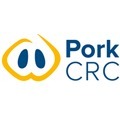
 Pork CRC research into the performance and eating quality of entire male pigs and those immunised against gonadotropin releasing hormone (GnRH), using Improvac™, has revealed that androstenone and skatole, the compounds linked to boar taint, were significantly higher in the belly fat of entire males than in immunised males.
Pork CRC research into the performance and eating quality of entire male pigs and those immunised against gonadotropin releasing hormone (GnRH), using Improvac™, has revealed that androstenone and skatole, the compounds linked to boar taint, were significantly higher in the belly fat of entire males than in immunised males.
The study, by PhD candidate Karen Moore of WA Department of Agriculture and Food, also showed that androstenone was higher in entire male pigs grown out to heavier live weights (107kg v 74 kg).

While no entire male pigs slaughtered at lighter weights had androstenone levels above the sensory threshold (>1.0 ug/g), 18 per cent of those grown to heavier weights did.
In contrast, 18pc of light weight and 33pc of heavy weight entire males had belly fat skatole levels exceeding the sensory threshold for skatole (>0.2 ug/g). Of pigs fed adlibitum, 38pc and 43pc of light and heavy entire males had skatole levels above the sensory threshold.
No immunised male exceeded the sensory threshold level for androstenone and only one heavy immunised male exceeded the sensory threshold level for skatole.
Consumer perceptions of eating quality of the loin steak reflected differences in boar taint compounds, with the percentage of steaks ranked by consumers as unacceptable, or below average, being 29pc for entire and 20pc for immunised males.
When asked about their repurchase intention, 39pc of respondents ranked the loins from entire males as “definitely would not repurchase or unlikely to repurchase”. The corresponding percentage for the loin from immunised males was 27pc.
According to Ms Moore, the results confirm immunisation against GnRH effectively reduces the incidence of boar taint, but slaughtering entire male pigs at light weights and at very light weights (64-73 kg) does not.
“Clearly, improving the eating quality of pork requires a more proactive approach to managing androstenone levels and especially skatole levels in carcase fat,” she said.
Immunising against GnRH had previously been shown to eliminate boar taint, provided pigs were not sold within two weeks of the second vaccination.
Ms Moore is now working on strategies to minimise the decline in feed efficiency and increase in back fat thickness that occurs in immunised males about three weeks following the second vaccination with Improvac.
March 12, 2015 - Pork CRC


